Did you know that more than 30% of what we discard is actually food scraps and yard waste that can be transformed into rich, garden-nourishing compost? With Americans sending millions of tons of organic material to landfills each year, embracing an outdoor compost bin is more than just an eco-friendly trend—it's a game-changer for your backyard and the environment. In this easy-to-follow guide, you'll discover clever green gardening hacks, practical solutions, and expert tips to help you confidently build, choose, and maintain the ideal compost system for your home.
Unconventional Truth: Why An Outdoor Compost Bin Is a Gamechanger for Your Backyard
The reality behind most backyard waste is startling: food scraps and yard trimmings make up a massive portion of what ends up in our landfills. Yet these organic materials, when processed in an outdoor compost bin, can decompose into nutrient-rich finished compost that revitalizes your garden and cuts your household waste sharply. Unlike a basic compost pile or wire bin, an outdoor composter offers organization, easy access, and crucially, the ability to handle diverse kitchen and garden waste efficiently all year long. This means less landfill contribution, improved garden yields, and even potential savings on store-bought soil enhancers.
Swapping trash cans for compost bins isn't just a green lifestyle statement—it's also a practical move for homeowners who want to close the loop between their kitchens, yards, and gardens. Open bins, closed bins, tumbler models, and DIY compost systems all provide unique ways to ensure organic matter stays out of the trash, transforming what was once considered waste into a sustainable resource. By understanding how outdoor composting systems fit into your backyard—and the common pitfalls to avoid—you can create an efficient, odor-free hub that supports your plants and respects the environment.
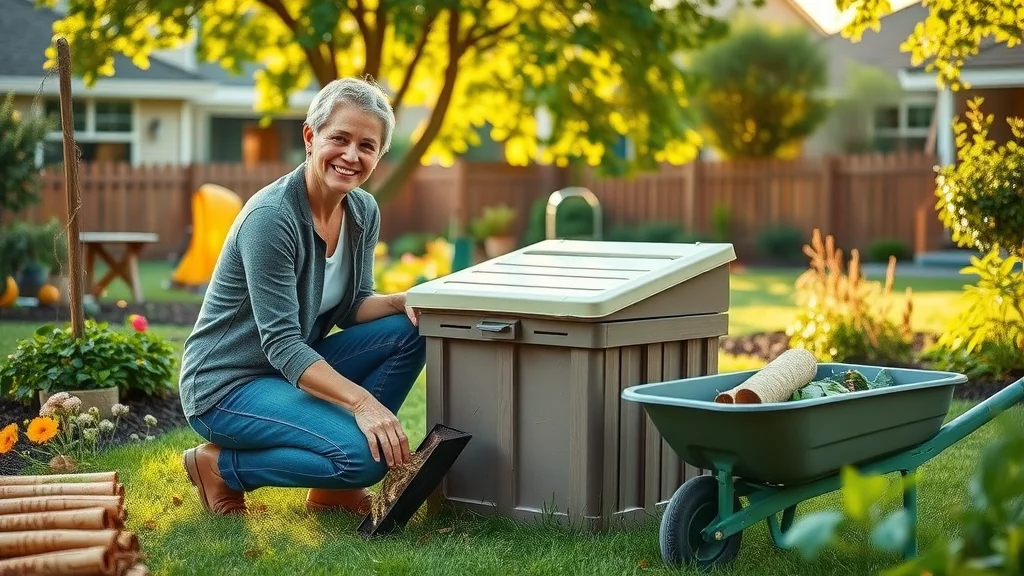
"According to the EPA, food scraps and yard waste together currently make up more than 30 percent of what we throw away – and could be composted instead."
What You’ll Learn About Outdoor Compost Bin Solutions
The environmental impact of a simple outdoor compost bin in a home setting
Key differences between compost bin types and compost bins for outdoors
How to choose, assemble, and maintain the best compost system for your needs
Evidence-based tips and tricks to maximize your composting results
Common pitfalls and how to avoid composting disadvantages
Outdoor Compost Bin Basics: What Every Homeowner Needs to Know
Starting your green gardening journey begins by understanding the fundamentals of composting. An outdoor compost bin is much more than just a dark container for garden waste—it's a managed system that encourages the natural breakdown of organic materials, like grass clippings and kitchen scraps. Whether you're considering a basic compost bin, a sophisticated tumbler, or a homemade wire bin, each system is designed to transform common household “waste” into a valuable soil amendment bursting with nutrients.
Key to the process are the balance and management of nitrogen-rich “green” materials (such as fresh kitchen scraps) and carbon-rich “brown” materials (like dry leaves and cardboard). The right compost system keeps these materials breaking down efficiently, with minimal effort and maximal benefit to your garden. Tools such as aeration devices, lid closures, and moisture monitors make adding and turning materials even simpler, ensuring that your backyard compost bin remains a held-together holding unit for organic material that breaks down, not a source of odors or pests.
What is a Compost Bin? A Simple Definition
A compost bin is a purpose-built container or structure designed to house organic materials—like garden waste, yard trimmings, and kitchen scraps—that decompose over time into fertile compost. These bin systems can be as straightforward as a wire bin fenced off with fence wire, or as advanced as closed bins with tumbling mechanisms for faster results. The main distinction with an outdoor compost bin lies in its ability to manage materials efficiently, contain odors, keep out wildlife, and maintain optimal conditions for the composting process. Some bins are stationary, allowing you to simply "set and forget," while others require occasional turning or layering to accelerate decomposition.
Whether choosing between an open bin, closed bin, or DIY setup, remember that the best compost bins are designed to fit your backyard size, the volume of kitchen and garden waste you generate, and any local climate considerations, particularly for keeping your compost system in place during heavy winds or storms.

How an Outdoor Compost Bin Supports Sustainable Living
Integrating an outdoor compost bin into your backyard routine not only reduces landfill waste but also closes the loop on your home’s organic material cycle. Every kitchen scrap or handful of garden clippings that enters your compost system is a small step toward lowering greenhouse gas emissions and conserving landfill space. Composting is a pivotal practice in sustainable living, as it transforms what would be garbage into a resource that naturally enriches your soil—a true win-win.
By fostering a healthy decomposition process within your bin system, you ensure your backyard becomes a hub for climate-positive action. Better yet, homemade compost adds vital nutrients, improves soil structure, and retains moisture in your garden beds, decreasing reliance on synthetic fertilizers. As you begin composting, you'll quickly see how simple changes—like switching out trash bins for compost bins—can have a profound ripple effect in your community and local ecosystem.
Comparison of Compost System Types |
||||
Type |
Ease of Use |
Capacity |
Maintenance |
Best For |
|---|---|---|---|---|
Tumbler Bins |
Very easy, low turning effort |
Medium |
Minimal, easy aeration |
Busy homeowners, small spaces |
Stationary Bins |
Easy, just layer materials |
Large |
Occasional turning |
Large gardens |
DIY Outdoor Compost (Pallet, Wire Bin) |
Moderate, basic tools needed |
Customizable |
Manual management |
Budget-conscious, DIYers |
In-ground Units |
Very easy, out of sight |
Small |
Nature-driven |
Minimalist gardens, discreet needs |
How to Build an Outdoor Compost Bin: Step-by-Step Guide
Ready to roll up your sleeves and transform kitchen scraps into garden gold? Constructing your own outdoor compost bin is affordable and deeply satisfying. Below you'll find a simple, actionable approach to creating a bin system that works for your space and needs—resulting in premium finished compost, not landfill waste. Building your own bin lets you choose durable materials, adapt size to your available yard, and control aesthetics, ensuring your compost solution is as effective as it is visually pleasing.
Whether you go for a wire bin, sturdy wooden holding unit, or plastic drum, assembling a compost bin is straightforward and teaches the valuable basics of compost management. By following the steps, you’ll ensure your composting process remains efficient and mess-free, and you’ll eliminate the guesswork behind how to structure your backyard compost pile for best results.
Gather Materials for Your Compost Bin:
Choose materials like wood pallets, fence wire, or recycled plastic. Select tools—hammer, wire cutters, power drill—as needed for assembly.Select the Ideal Location for Outdoor Compost:
Find a flat, well-drained spot near your garden beds but away from your home for convenience and odor control.Construct the Compost System:
Build an open bin from pallets or a closed bin from a plastic drum. Secure your structure with fence wire or sturdy screws to keep it in place during heavy winds.Fill and Maintain Your Compost Bin Properly:
Start with a layer of coarse garden waste, then alternate greens (kitchen scraps, grass) with browns (leaves, cardboard). Water lightly and turn the pile every few weeks for even decomposition.
Watch: Video Demonstration: Building Your Own Outdoor Compost Bin (Visual Step-by-Step)
"The right compost bin can turn everyday waste into rich, garden-boosting soil in as little as a few months."
Choosing the Best Outdoor Compost Bin: Features, Benefits, and Price Breakdown
Selecting the ultimate outdoor compost bin begins with knowing what features will serve you best in your garden. Whether you’re eyeing a tumbler for quick results, a large stationary bin, or a rugged DIY solution, each compost system offers distinct benefits for different needs and budgets. Ideally, your bin will strike a perfect balance between effective composting, ease of use, and value. Let’s dig deeper into what makes a compost holding unit ideal, and how to compare compost bins for lasting satisfaction.
The three pillars to consider are durability, ease of use, and odor/aeration management. Look for outdoor composters that can withstand weather, hold ample organic matter, and boast thoughtful design features—like latching lids and aerator holes. For larger families, opt for bigger bin systems or modular units that allow easy expansion as your composting material intake grows. Understanding these differentiators ensures your investment leads to years of sustainable gardening success, without suffering the usual composting disadvantages.
What to Look for in a Quality Outdoor Compost Bin
Durability, Size, and Materials
A top-tier outdoor compost bin is crafted from robust, weather-resistant materials—think thick UV-stabilized plastics or galvanized metal frames—to ensure longevity across seasons. Size matters; a bin that’s too small might get overwhelmed, while one that’s oversized may not heat up enough for efficient composting. Measure your available space and estimate your kitchen and garden waste volume before choosing. Closed bins help contain odors and pests, while open bins offer better aeration but may require more maintenance to manage moisture and wildlife. Modular systems and add-on sections also let you scale as your composting needs grow.
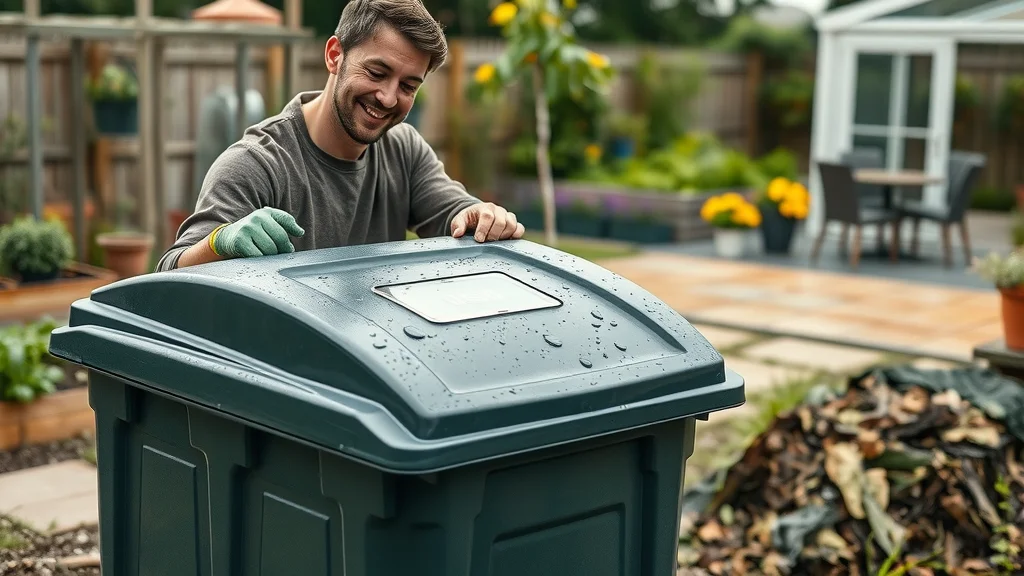
Ease of Use and Maintenance
Look for features that make adding organic material and turning your pile simple. Tumbler bins, for example, offer crank handles for effortless rotation, keeping you clean and the pile well-mixed. Stationary bins should have large openings and removable panels, allowing easy access to finished compost. Maintenance should involve minimal bending and lifting; accessible lids and levers are a plus. For pest and weather management, bins should fit tightly and lock when shut, reducing unwanted visitors while blocking excess rainwater. These small details collectively foster a positive, frustration-free composting experience for any homeowner.
Aeration and Odor Control in Compost Systems
Great compost systems delicately balance airflow and moisture. Proper aeration—provided by either built-in vents, manually turning the pile, or the presence of a wire bin design—speeds up the composting process and controls unpleasant odors. Insufficient oxygen leads to anaerobic (bad-smelling) decomposition, so seek compost bins with ample holes for ventilation, or designs that support easy manual aeration. Pair this with strategic layering of green and brown materials, and you’ll stay ahead of both stinky odors and slow decomposition. Closed bins are especially good at containing smells, while open bins require a little more mindfulness and hands-on care for best results.
Top-Rated Compost Bins Compared: Price, Pros, and Cons |
||||
Model/Type |
Price |
Capacity |
Pros |
Cons |
|---|---|---|---|---|
ComposTumbler 37 gal |
$150-200 |
Medium |
Easy to turn, fast results, odor-controlled |
Higher initial cost, needs assembly |
Stationary EcoBin 110 gal |
$80-120 |
Large |
High volume, weatherproof, simple use |
Manual turning, takes up space |
DIY Pallet Bin System |
$25-50 |
Custom |
Low cost, scalable, reuses materials |
DIY skills required, less contained |
In-ground Composting Tube |
$20-40 |
Small |
Discreet, low maintenance |
Slow, limited input size |
Subtle Buying Guide: Finding the Right Compost Bin for Your Home
Every garden and homeowner has unique needs—so use this buying guide to match your space, budget, and sustainability goals to the best outdoor compost bin. If you have a small city backyard, a compact tumbler or in-ground system keeps things neat without sacrificing output. For larger families or serious gardeners, larger stationary bins or modular bin systems allow you to process more organic material fast, while still keeping pests out. DIYers will enjoy crafting pallet or wire bins, personalizing their bins’ look and size at a fraction of the cost. Green thumbs eager to maximize eco-friendly impact should seek compost bins made from recycled materials or designed for closed-loop sustainability.
Top features to weigh include capacity, construction strength, lid/floor design, and aeration. When reading reviews or comparing products, look for praise of simple operation, longevity, and minimal odor issues. Don’t forget to factor in price: some systems pay off with time-saving convenience, while others excel in budget-friendliness but require more hands-on effort. Whatever your choice, the result is the same: less landfill waste and a thriving, sustainable backyard ecosystem.
Best for Small Backyards: Compact tumbler bins or in-ground tubes
Most Eco-Friendly Option: Recycled plastic or upcycled DIY pallet bins
Best Budget Outdoor Compost Bin: DIY wire bins or wooden pallet systems
Compost Systems for Large Families: Oversized stationary bins or modular holding unit setups
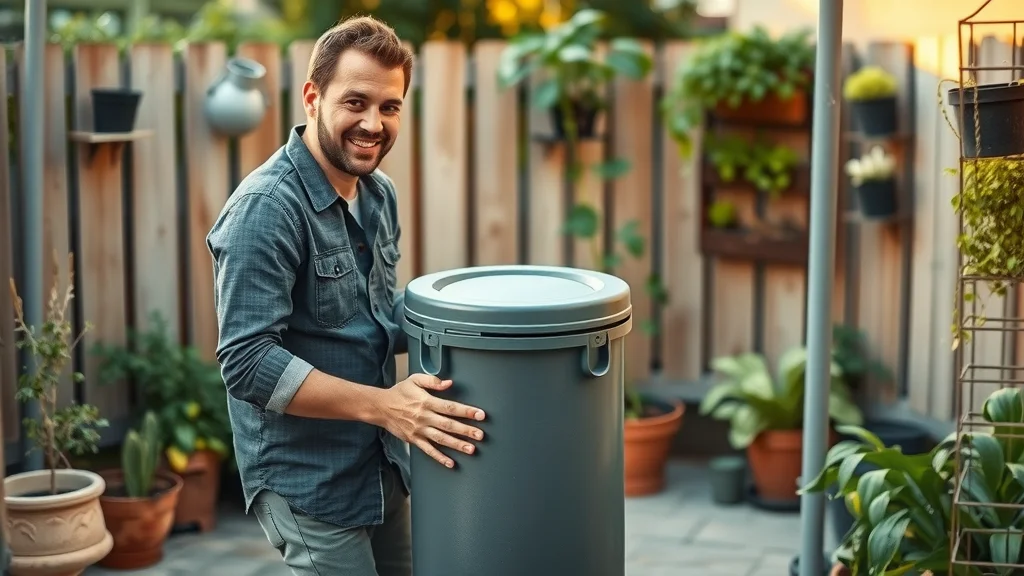
Watch:
People Also Ask: Outdoor Compost Bin Essentials
How often should I pee on compost?
Human urine can be a valuable “green” nitrogen source in the composting process, but moderation is key. If you opt to add urine to your outdoor compost bin, do so once every one to two weeks, making sure to balance with plenty of carbon-rich materials like dry leaves or cardboard. This will support healthy, rapid decomposition without creating odors or imbalanced moisture levels. Always avoid peeing directly on a compost pile if you're using it for food crops, and never allow pets or others to misuse the compost system. Cleanliness and proper dilution are essential—repeat sparingly for best results.
What are 5 disadvantages of composting?
Composting offers many benefits, but there are a handful of common disadvantages to consider: (1) Potential for unpleasant odors if your compost system isn't well-aerated; (2) Attraction of pests (rodents, flies) if food scraps are improperly managed in open bins; (3) The need for regular maintenance—turning, moisture checks—to ensure successful breakdown of materials; (4) Requires outdoor space, which isn’t always available to urban dwellers; and (5) Time to see results, as even efficient compost bins can take several months for materials to become finished compost. With informed upkeep and thoughtful bin design, most of these issues can be minimized or completely avoided.
What is the first rule of composting?
The first rule of composting is to maintain the correct balance of greens (moist, nitrogen-rich organic matter like kitchen scraps and grass clippings) and browns (dry, carbon-rich items like leaves or cardboard). This ensures proper decomposition, prevents odors, and helps beneficial microorganisms thrive. A well-balanced compost bin supports a healthy, rapid composting process and produces high-quality soil amendment for your garden beds. Remember: if in doubt, add more browns to manage moisture and odor, and always avoid composting meat, dairy, or oily foods in outdoor bins.
How to make an outdoor compost bin?
Building your own outdoor compost bin is simple: gather sturdy materials like repurposed wood pallets or sturdy fence wire, form a cube or cylinder shape, secure all sides, and position the unit on soil in a convenient garden spot. Start the composting process by layering greens and browns, sprinkle with water if dry, and turn regularly for aeration. You’ll soon have a functional bin system transforming kitchen and garden waste into valuable finished compost, all for a fraction of the price of commercial models.
Top Tips for Maintaining Your Outdoor Compost Bin All Year Round
Monitor moisture and aeration in your compost system: Keep materials damp but not soaked, turn the pile often for oxygen.
Layer materials strategically: Alternate green and brown inputs to maintain the right decomposition balance.
Harvest finished compost regularly: Every few months, scoop out finished compost from the bottom or removable panel.
Troubleshoot common compost bin problems: Manage odors by maintaining airflow, deter pests by burying food scraps, and address soggy piles by adding more dry materials.
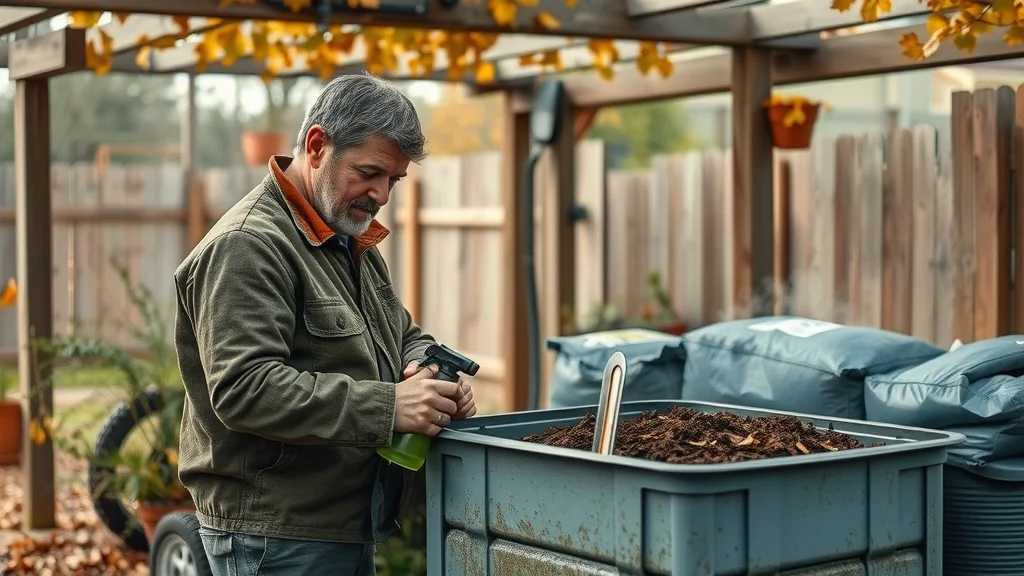
"A well-managed outdoor compost bin not only nourishes your garden but also reduces landfill waste – and that’s a win for everyone."
Key Takeaways on Outdoor Compost Bin Solutions for Every Homeowner
Outdoor compost bin benefits extend far beyond simple waste reduction
Choosing the right compost system is key for long-term success
Regular maintenance leads to rich, garden-ready compost
Frequently Asked Questions (FAQs) on Outdoor Compost Bins
Can an outdoor compost bin smell bad?
If managed properly—layering greens and browns, regular aeration, and avoiding meats/dairy—outdoor compost bins should not smell unpleasant. Odors tend to indicate too much wet material or not enough airflow.How long does it take to get usable compost?
With an active compost system and proper care, you can expect finished compost in three to six months. Factors like temperature, material size, and the frequency of turning or aerating all impact speed.Should I buy compost bins or build my own?
Buying is convenient and comes with features like built-in aeration. Building your own bin saves money and lets you size and style it exactly how you want. Both options can work well—choose based on your budget, time, and DIY comfort level.What can’t go in an outdoor compost system?
Avoid meat, dairy, oily foods, and heavily coated papers. Stick to organic yard waste, fruit/vegetable scraps, eggshells, coffee grounds, and paper products without heavy inks or chemicals for safe, fast decomposition.
Ready to Transform Your Backyard? Explore More Green Gardening Tips
Your outdoor compost bin is more than a waste solution—it's the heart of a thriving, eco-friendly backyard. Stay current with more inspiring gardening guides and sustainability hacks at luxurylandscaping.space!
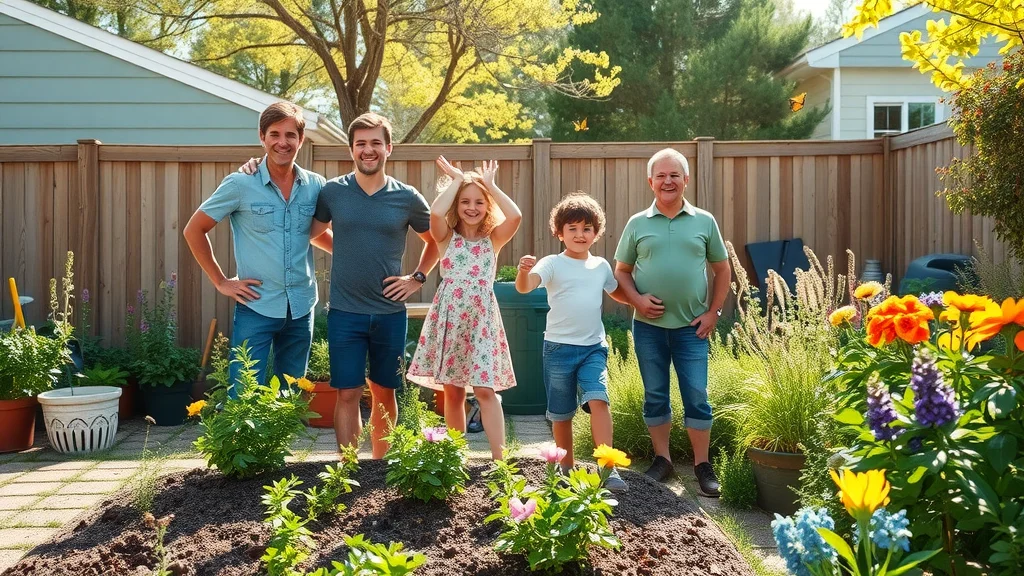
Ready to start composting? Choose your bin, follow these hacks, and turn your backyard into a powerhouse of sustainability and growth in just one season!
To enhance your understanding of outdoor compost bins and their benefits, consider exploring the following resources:
“Build Your Own Outdoor Compost Bin”: This guide provides a cost-effective method to construct a compost bin using welded wire fencing, offering step-by-step instructions suitable for DIY enthusiasts. (boston.gov)
“Outdoor Composting Guide”: Published by the NYC Department of Sanitation, this comprehensive guide covers the essentials of setting up and maintaining an outdoor compost bin, tailored for urban environments. (nyc.gov)

 Add Row
Add Row  Add
Add 

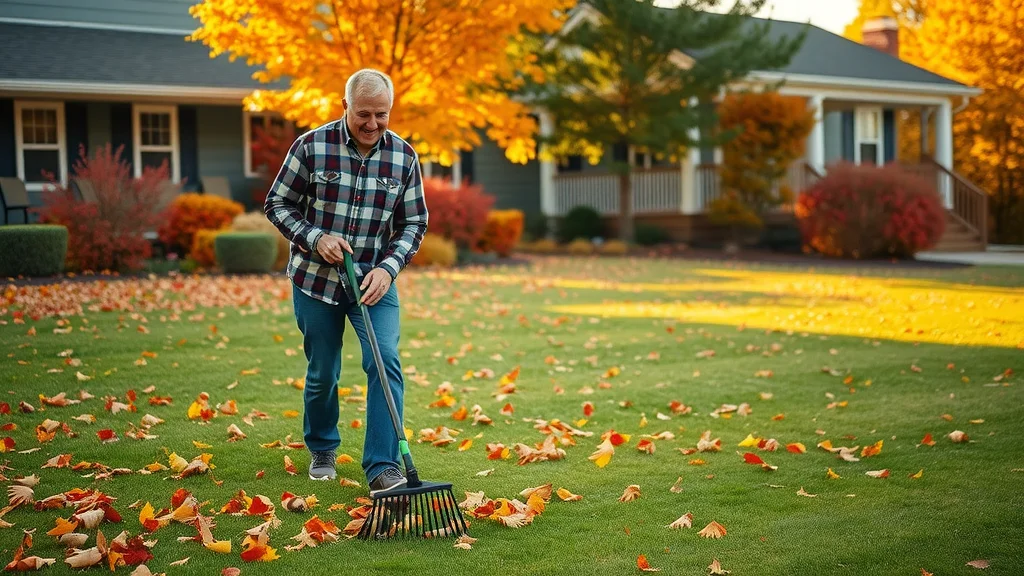

Write A Comment